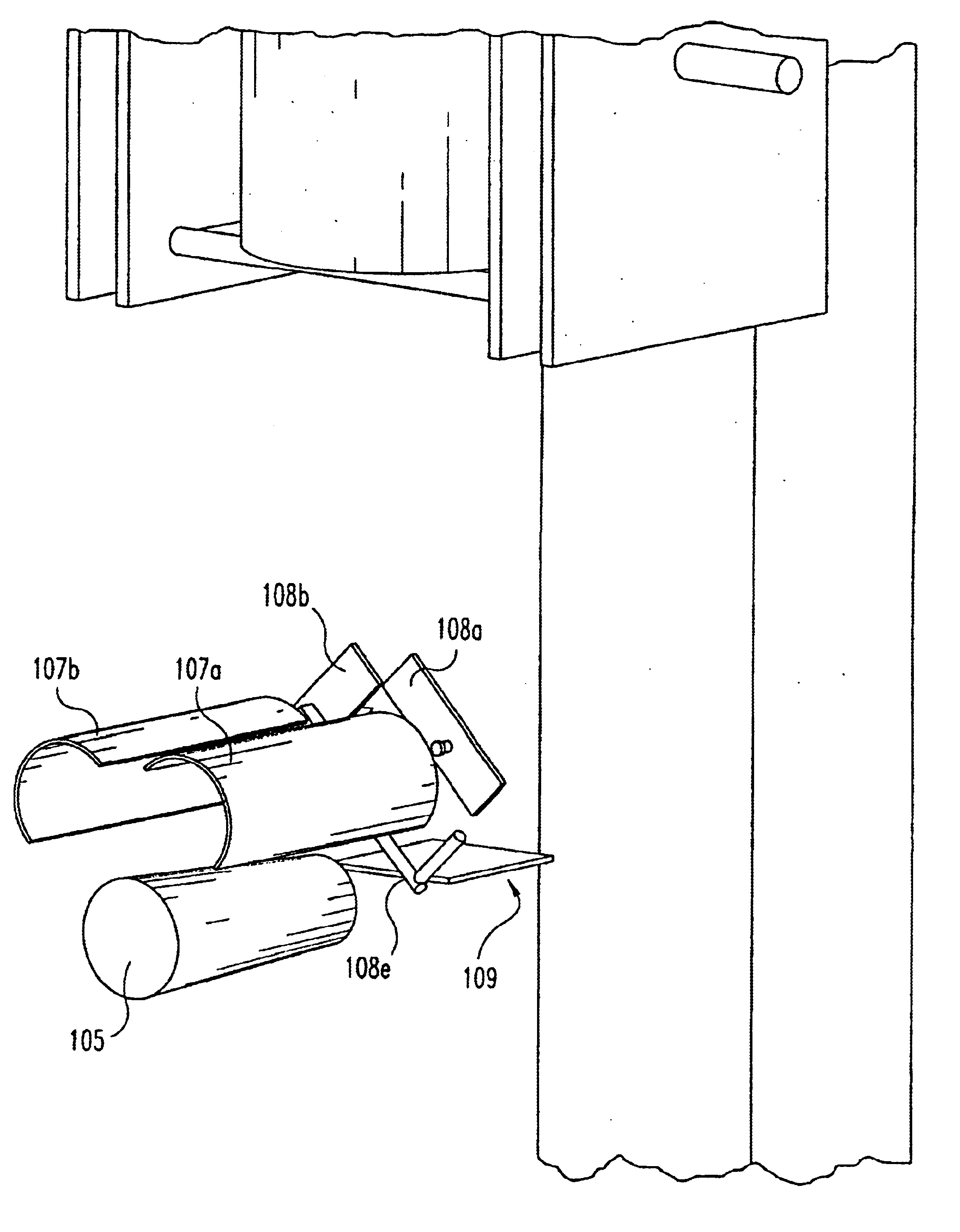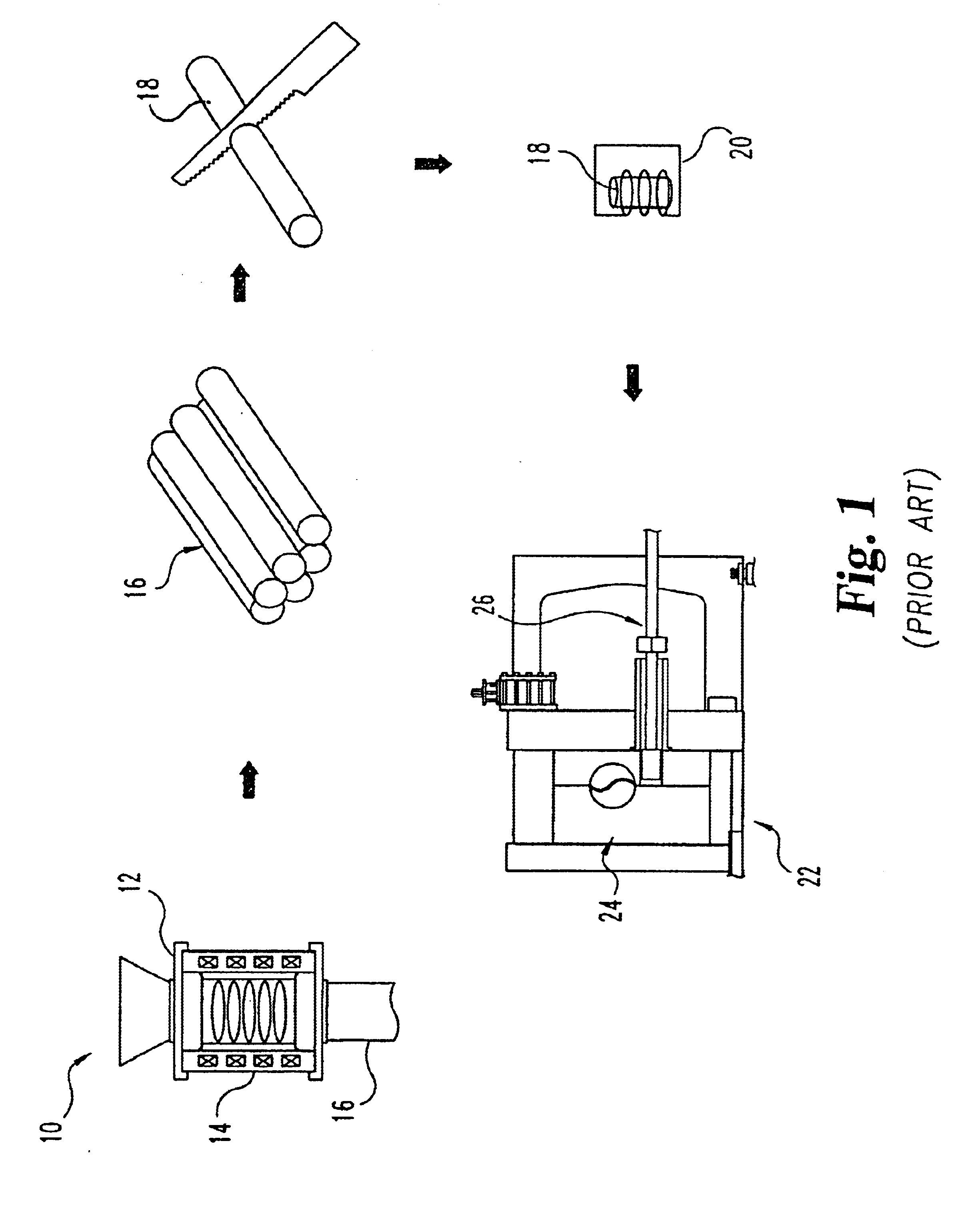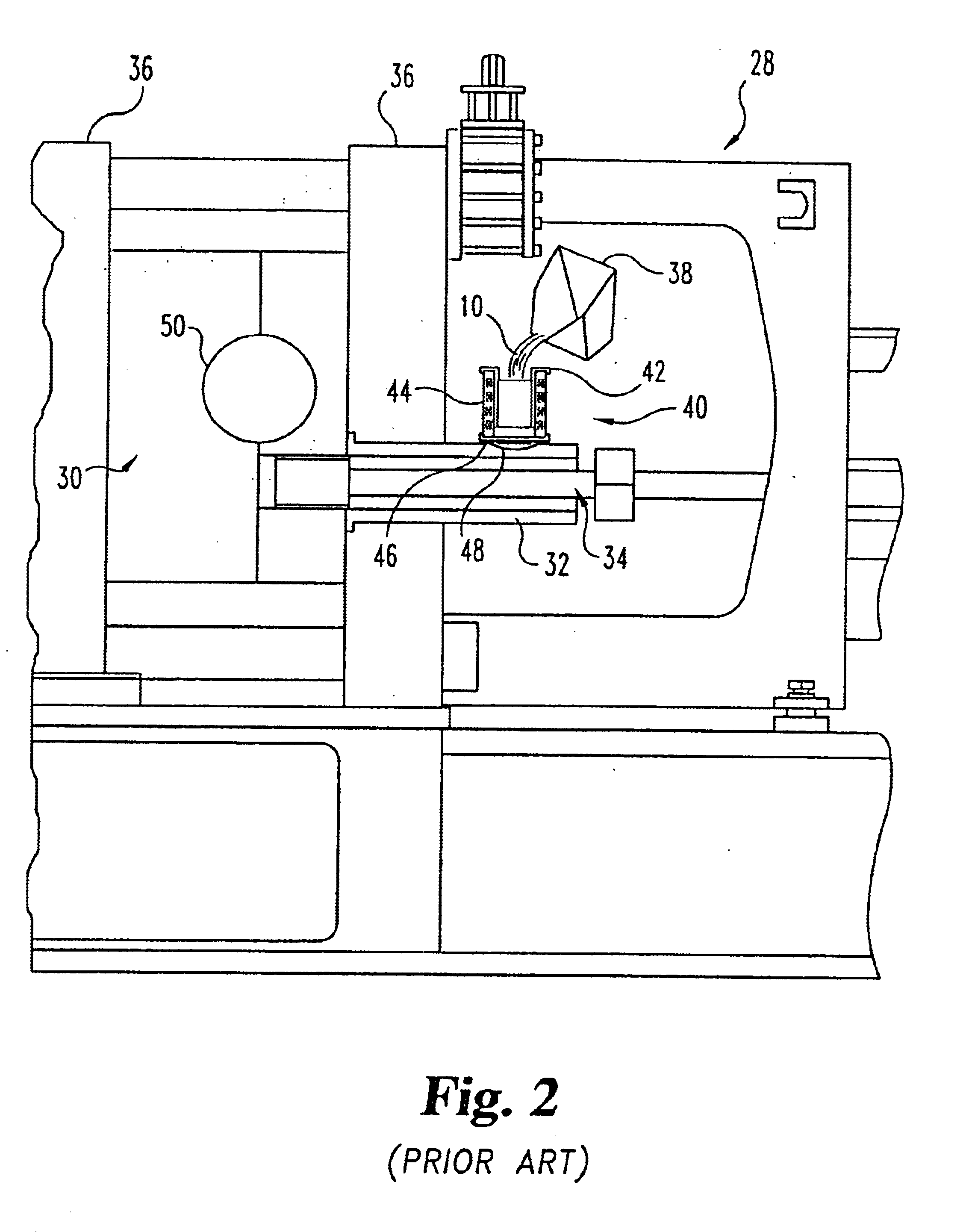Apparatus for and method of producing on-demand semi-solid material for castings
- Summary
- Abstract
- Description
- Claims
- Application Information
AI Technical Summary
Benefits of technology
Problems solved by technology
Method used
Image
Examples
example 1
A 15 pound ingot of 356 aluminum was melted in a furnace at increasing increments of 100° F. until the alloy was in a molten state at a temperature of 1220° F. The molten alloy was then poured into a mold or transfer vessel 40 surrounded by an electrical stator (Delco 114521-3 phase) connected to a Danfuss type 3004 variable drive, which controls the voltage / frequency supplied to the stator 44. The higher the voltage / frequency, the higher the shear stress of the molten metal, which has a direct relationship to the grain size of the alpha grain structure. The available voltage was set at up to 210 volts and the actual voltage was recorded throughout the complete cycle of the process by means of a chart recorder. The temperature of the metal while being stirred in the transfer vessel was also measured and recorded with the same chart recorder as the voltage.
The molten aluminum was poured into the transfer vessel 40 and current applied to stator 44. The metal stayed in transfer vessel ...
example 2
Consistent with the teachings of the present invention and with continued to reference to the steps of the FIG. 5 flow chart, an engine-suspension bracket was fabricated. The original design of this bracket used cast iron and there was an interest in reducing its weight for improved fuel efficiency for the vehicle. A decision was made by the auto maker to use an aluminum alloy for the bracket. However, the aluminum bracket made with conventional high-pressure die casting failed to pass the evaluation because of its low elongation, which could lead to a catastrophic failure in a collision. When the apparatus and process steps of the present invention were used for the fabrication of this bracket, it was determined that all of the desired material properties for the bracket could be achieved. The specifics of the actual process used for the fabrication of this engine-suspension bracket, according to the present invention, are outlined below.
Al 357 is melted into a molten state in a fu...
PUM
| Property | Measurement | Unit |
|---|---|---|
| Time | aaaaa | aaaaa |
| Time | aaaaa | aaaaa |
| Time | aaaaa | aaaaa |
Abstract
Description
Claims
Application Information
 Login to View More
Login to View More - R&D
- Intellectual Property
- Life Sciences
- Materials
- Tech Scout
- Unparalleled Data Quality
- Higher Quality Content
- 60% Fewer Hallucinations
Browse by: Latest US Patents, China's latest patents, Technical Efficacy Thesaurus, Application Domain, Technology Topic, Popular Technical Reports.
© 2025 PatSnap. All rights reserved.Legal|Privacy policy|Modern Slavery Act Transparency Statement|Sitemap|About US| Contact US: help@patsnap.com



